9 October 2022
Breakfast: the usual wide selection of olives, cheeses, eggs, breads and jellies, a bunch of stuff. No yogurt and no coffee. I’m not wild about tea on the best of days and I am getting sick of it here. But, I have my bright new yellow Cappadocia socks on my feet and an umbrella in my pocket and ready for that castle.
As one happy traveler put it: What are you waiting for? What are you saving for? Now is all there is.
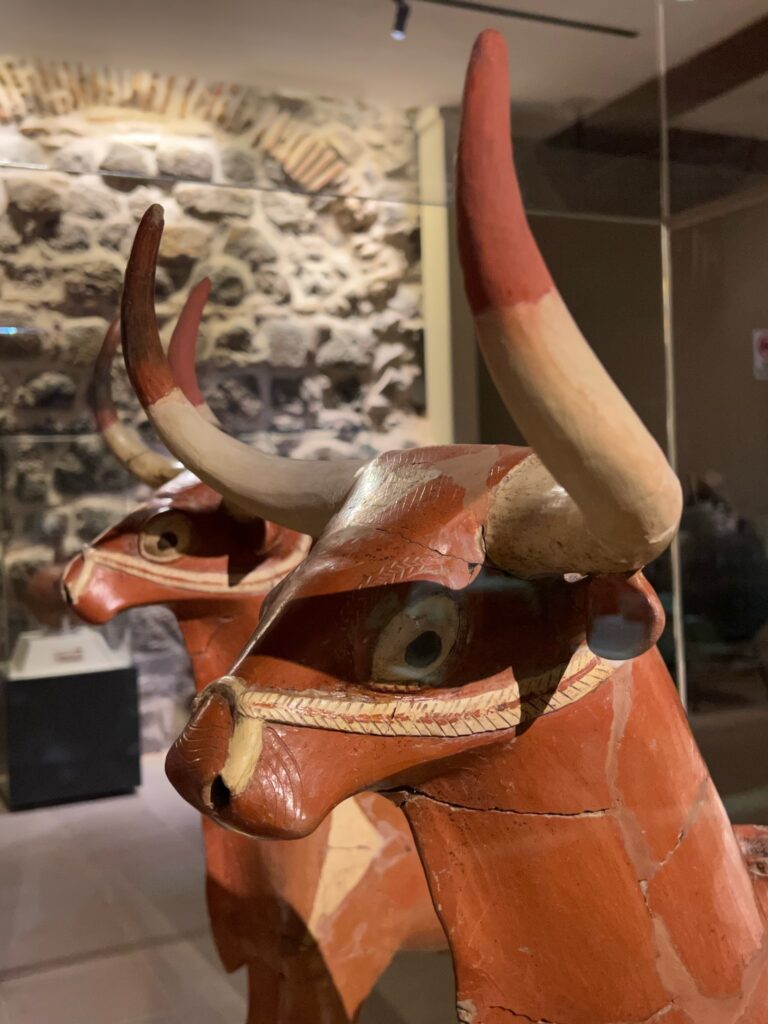
I start my day at the Museum of Anatolian Civilizations. It is a large building full of ancient stuff, reached by a climb up several streets. Some excellent electronic touch screens assist in explaining the ancient artifacts. Civilizations, from Hittites, Phrygians, Lydians and Persians to Romans and the Byzantines, have lived here over the past thousands of years. In Stone Hall are detailed orthostat reliefs from the biblical Hittite city of Carchemish. Downstairs, there are even older artifacts of early man. My imagination is fired – I want to see more of Turkey. Seeing these archaeological finds in Ankara, it is clear I am literally standing on many of these ancient ruins. This is what workers find when they dig for metros in ancient cities.
The other thing you will find all over Ankara, with no need for digging, are goats. At home, we have cows. Here, Ankara brightens their streets and squares with sculptures of painted goats. Why? These goats are known as “angora goat” and the word angora is the former name of Ankara. The Ankara goat was brought here from Middle Asia by the Turks centuries ago and became a major producer of mohair. The city is home to 75% of these angora goats – living ones. In their honor, the city is also home to numerous spotted, speckled, and bejeweled goats.
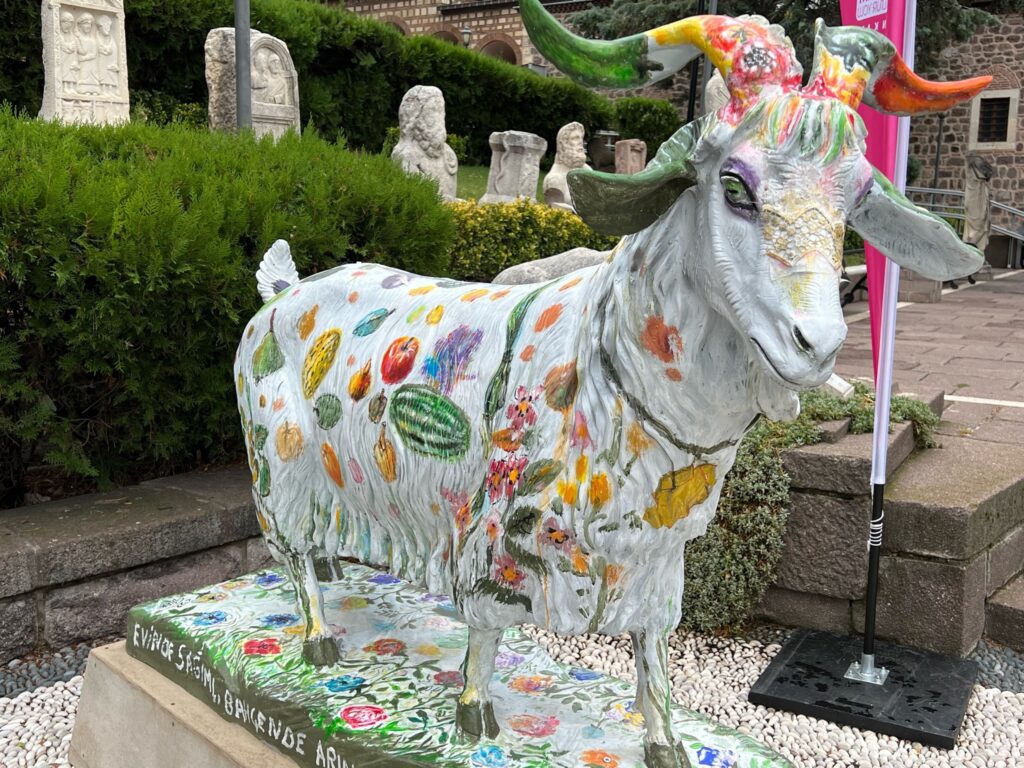
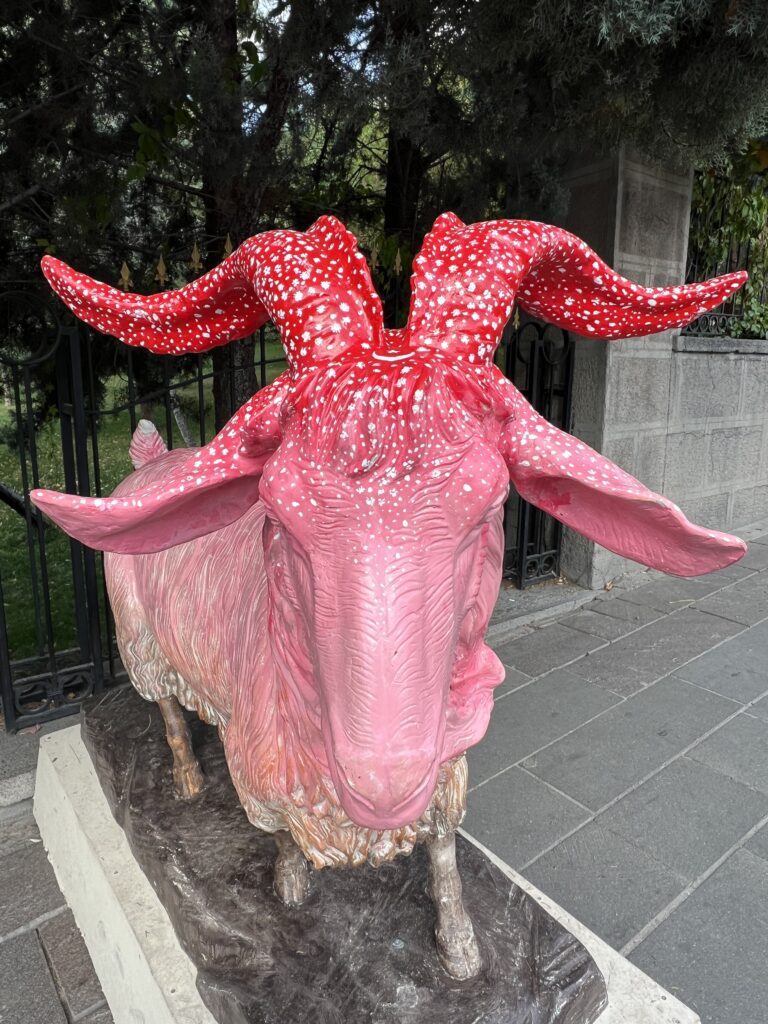
Climbing further up the street, I enter Erimtan Archaeology and Art. This is a small but mighty museum containing exquisite artifacts of glass, bronze, glazed cups, pottery, and gold. The new but temporary “Aphrodisias” exhibit of international Turkish photographer Ara Güler is marvelous. By accident, in 1958, Güler discovered the ancient town of Geyre, photographing it and its inhabitants. His work is beautiful and poignant for his stunning photographs also brought the archeologists who began excavation of the town. For the village people the ancient ruins were a part of their daily life. They had lived for generations within the remains of thousands of years of ancient history. Since, the once isolated but happy inhabitants have been relocated and the site is now protected by UNESCO.
I pause at the museum’s cafe and enjoy a wonderful cappuccino while overlooking modern Ankara. I am fortifying myself for the remainder of the climb. Just across the street is a tall stone gate and clock tower, adorned with banners of the Turkish flag and of Pasha Atatürk. There is also a brightly painted goat.
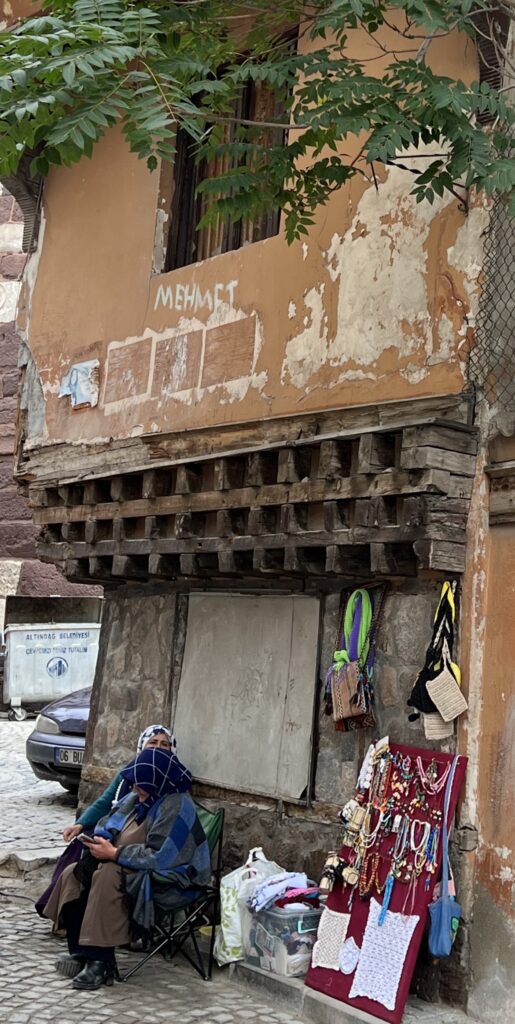
Once inside the gate, the world changes. The citadel dates from the Byzantine era with high fortifications dating from the 9th century. Inside, narrow cobblestone alleyways are filled with antique shops, craftsmen, old babushka ladies knitting and cooking and selling their wares. Climbing the stairs to the castle’s ramparts, I am high above the modern city of Ankara and panoramas reach for miles. But the best is just beneath the walls – the old tile-roofed Ottoman-era houses, some of which are in total disrepair. These homes are doomed and slowly being replaced and restored.
Many people scramble about the walls. In the courtyard, a young man proposes to his girlfriend as musicians play. Heading downhill from the inner citadel, I follow the winding lanes through sections of renovations, all so modern now. I wonder how the old inhabitants feel. I finally give up trying to find an exit and retrace my steps to the gate. From there, I walk downhill and exit the area through Hisar Park.
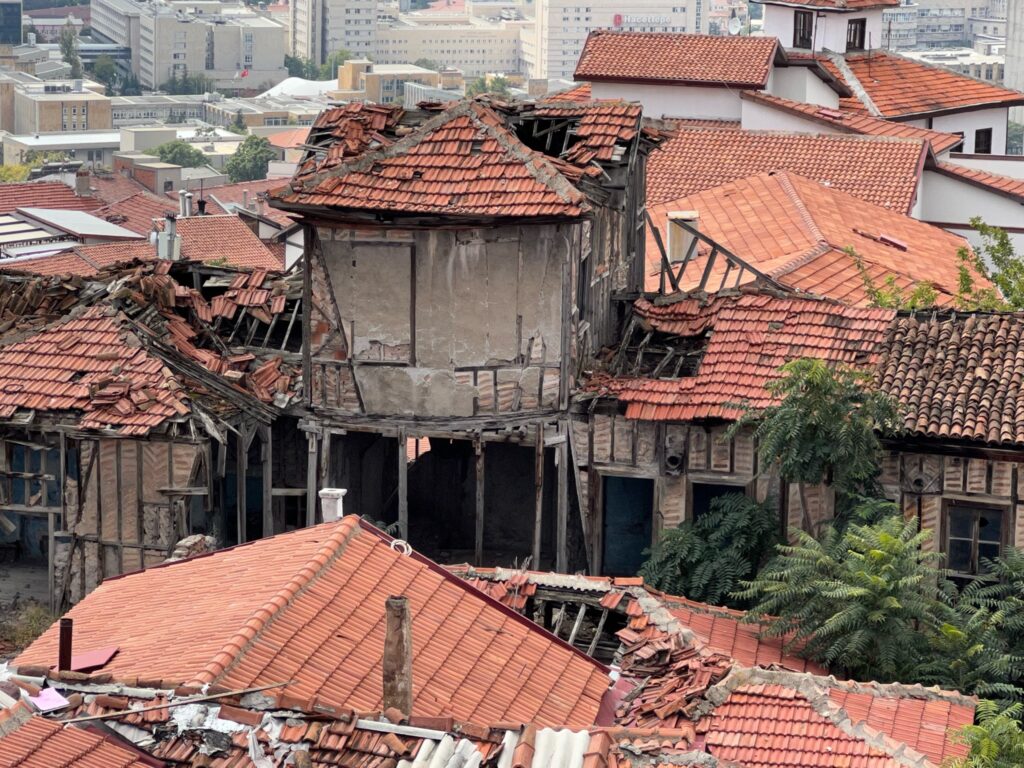
Ankara is a modern city, one reason why I am not in love with it. It was a planned capital following Turkey’s independence in October 1923. However, there have been settlements here since the Bronze Age. In the Roman period, this area became known as Ankyra, and Emperor Augustus made it capital of the Roman province of Galatia. I pass ruins of an ancient Roman theater. There are many such ruins in this area and I’ll need to return and explore. For now, I continue downhill.
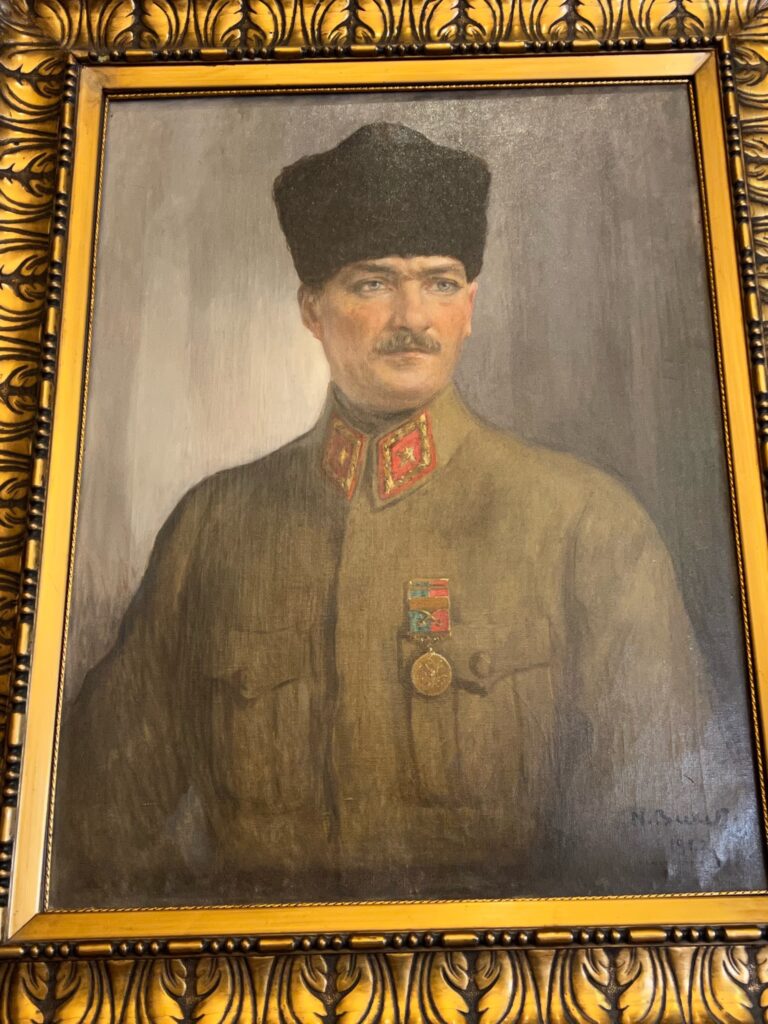
The Museum of War of Independence is in the oldest Parliament building and effectively documents the end of the civil war and creation of Turkey and its constitution. Mustafa Kemal Atatürk’s involvement in these events is minutely followed; his every event and movement is featured. The second museum included with entry is the excellent Republic Museum just down the street. It is housed in the beautiful second parliament building. It was here that Atatürk gave his October 1927 “Great Speech” which lasted 36 and a 1/2 hours. His handsome presence is everywhere.

It seems fitting I end the day at Anitkabir, the mausoleum of Mustafa Kemal Pasha Atatürk. Due to his military (think victories at Gallipoli and defeating the Ottoman Empire), political, secular and progressive accomplishments (Turkish women received equal rights during Atatürk’s presidency), Atatürk is regarded as one of the most important political leaders of the 20th century and is revered as the father of independent Turkey. I also named my cat for him.
Walking across town is a unique experience because the shortest route literally passes through the massive train station, which means clearing security, walking above the train platforms, and exiting the other side. Then I must climb up and over a busy 8-lane freeway and continue walking to the park. No metro stop seems to make this any easier. Their most popular site in Ankara doesn’t have a metro stop within a mile.
The Anitkabir is a huge complex atop Observation Hill, which is a central location in Ankara and can be seen by all parts of the city. I approach along the 860 foot-long walkway lined on both sides by twelve pairs of lions. Up a series of grand stairways, I come upon the first of many stoic guards representing various branches of the military. The remainder of the complex consists of several towers which feature historical items, in particular Atatürk’s beautifully restored Lincoln town cars, and an excellent museum all centered around a magnificent Ceremonial Plaza all surrounded by gardens and a Peace Park. But the main attraction is the changing of the guard and the Hall of Honor.
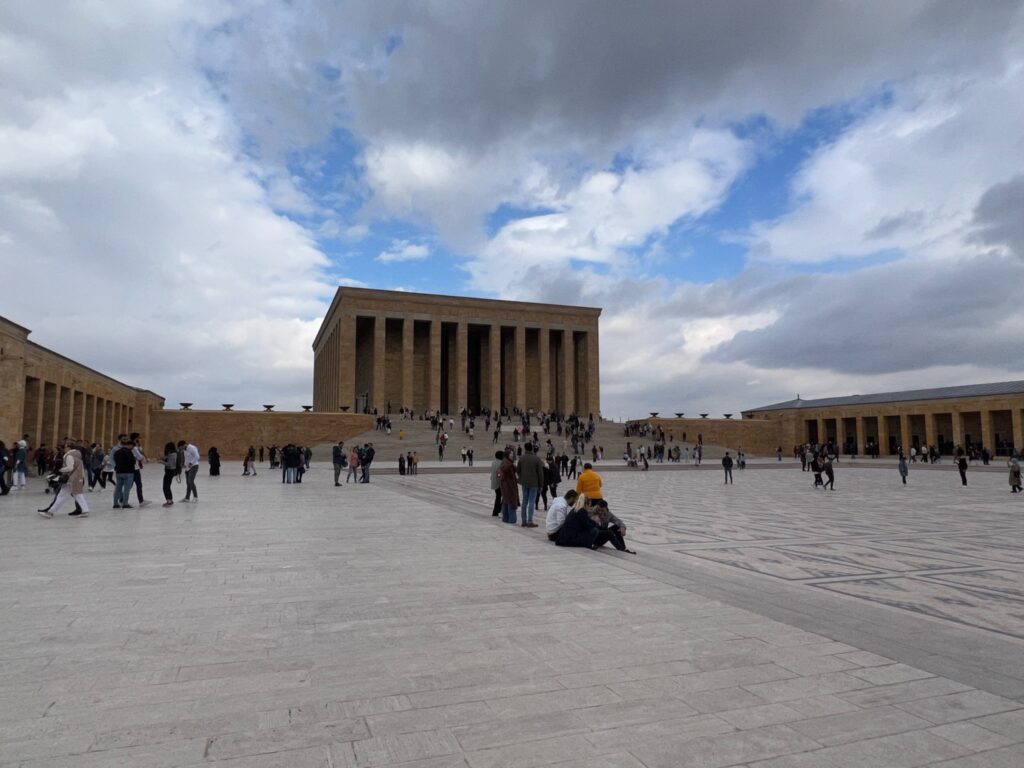
The colonnades and mausoleum are of symmetrical, square stone, simple but impressive. The Hall of Honor is over 182 feet long, 136 feet in width with a height of 89 feet. Completed in 1953, it was at that time that with great ceremony Mustafa Kemal Atatürk’s body was moved to his final resting place (he died 10 November 1938). Atatürk’s tomb is situated right under the symbolic 40-ton sarcophagus, and Atatürk’s body is buried below this in a special Tomb Room. Wonder if Atatürk ever suspected he would be so honored?

The best time to take a selfie with Atatürk is during the changing of the guard. On the anniversary of his death on 10 November in 2013, over a million people visited his tomb. However, the hall empties of everyone but the stoic guard at the start of the ceremonial changing of the guard.
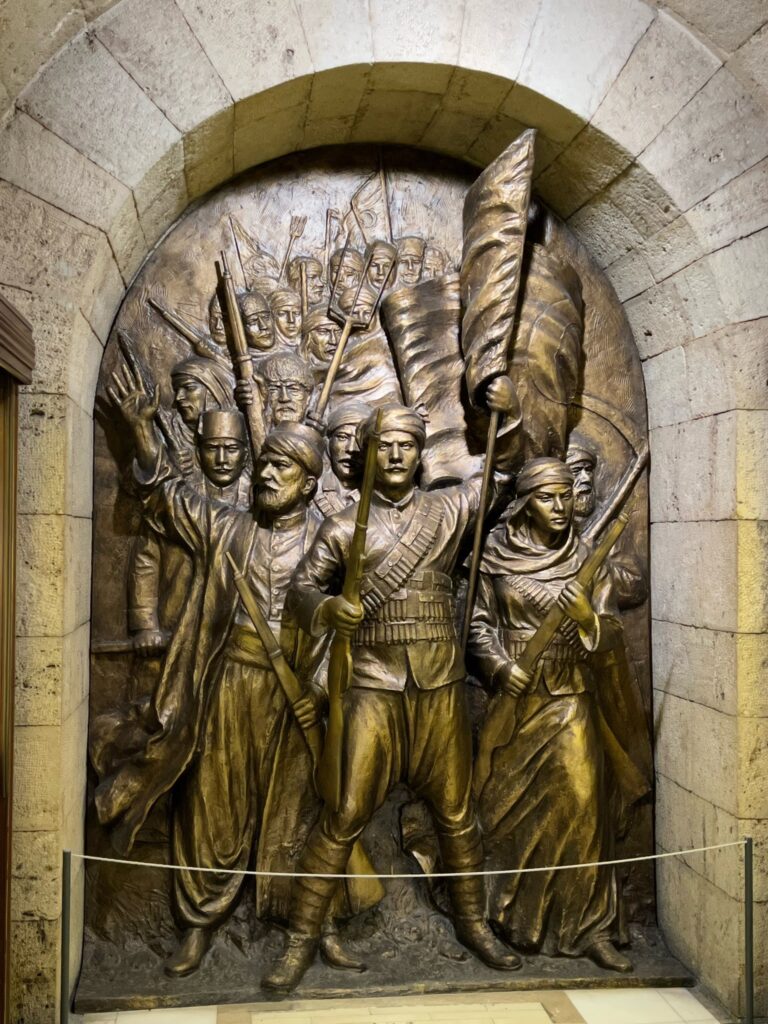
Immediately after the selfie, head to the museum to the left of the mausoleum exit as it will now have the shortest line (the lines can be long). The museum documents Turkey’s version of World War One (side of Central Powers), through the war for independence (not sure how the Greeks, Italians, Armenians or Bulgarians would agree). It is an excellent museum and contains extensive collections on Turkish culture, history, the formation of modern Turkey, and possibly everything Atatürk. There are endless portraits of him. It is patriotism on steroids. I am amazed when I emerge on the opposite side of the plaza, the museum is that large.
My Cappadocia socks have taken me over 5 miles and 20 floors today and the thought of walking back is daunting. Cell service sucks and my attitude is fading fast. In a recent National Geographic personality study, researchers found rats show kindness while monkeys, our nearest genetic relatives, complain.
I choose the rat and kindly break two cardinal rules of my travels:
First, I flag a cab to take me to my hotel. My driver chooses the monkey. We depart to honks. I quickly learn the system. One honk means “watch it I am cutting in front of you.” Several honks signals “get the hell out of the way I have a fare and am more important than you.” And stopping at lights and angrily yelling out the window at the cabbie next to you is clearly road rage. My driver practices the latter.
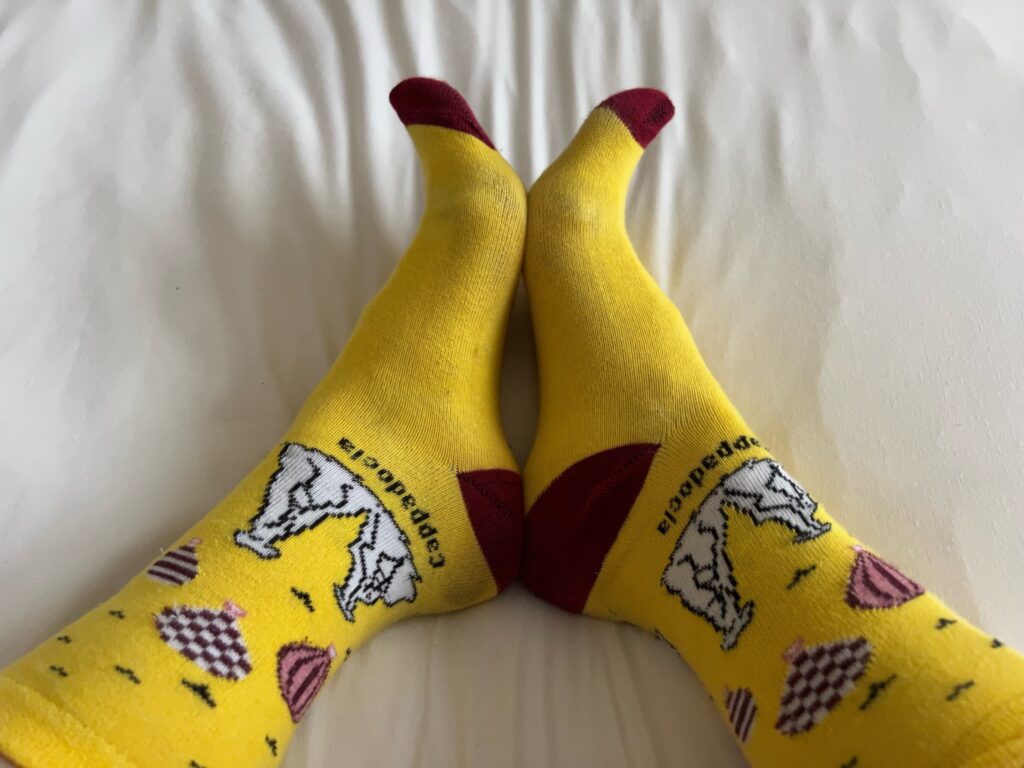
Second, I walk to the mall and enter Burger King. Be still my heart, I enjoy a King Beef Burger, onion rings and a Diet Coke, a splurge of 95 tl, about $5. The cab was half that but more entertaining. All in all, I am glad to have chosen the rat.
0 Comments